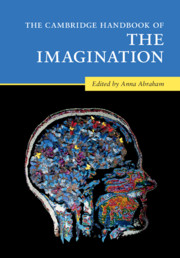Book contents
- The Cambridge Handbook of the Imagination
- The Cambridge Handbook of the Imagination
- Copyright page
- Dedication
- Contents
- Figures
- Contributors
- Acknowledgments
- 1 Surveying the Imagination Landscape
- Part I Theoretical Perspectives on the Imagination
- Part II Imagery-Based Forms of the Imagination
- 12 The Visual Imagination
- 13 Musical Imagery
- 14 Neurophysiological Foundations and Practical Applications of Motor Imagery
- 15 Temporal Mental Imagery
- 16 Emotional Mental Imagery
- 17 Multisensory Perception and Mental Imagery
- 18 Evocation: How Mental Imagery Spans Across the Senses
- Part III Intentionality-Based Forms of the Imagination
- Part IV Novel Combinatorial Forms of the Imagination
- Part V Phenomenology-Based Forms of the Imagination
- Part VI Altered States of the Imagination
- Name Index
- Subject Index
- References
14 - Neurophysiological Foundations and Practical Applications of Motor Imagery
from Part II - Imagery-Based Forms of the Imagination
Published online by Cambridge University Press: 26 May 2020
- The Cambridge Handbook of the Imagination
- The Cambridge Handbook of the Imagination
- Copyright page
- Dedication
- Contents
- Figures
- Contributors
- Acknowledgments
- 1 Surveying the Imagination Landscape
- Part I Theoretical Perspectives on the Imagination
- Part II Imagery-Based Forms of the Imagination
- 12 The Visual Imagination
- 13 Musical Imagery
- 14 Neurophysiological Foundations and Practical Applications of Motor Imagery
- 15 Temporal Mental Imagery
- 16 Emotional Mental Imagery
- 17 Multisensory Perception and Mental Imagery
- 18 Evocation: How Mental Imagery Spans Across the Senses
- Part III Intentionality-Based Forms of the Imagination
- Part IV Novel Combinatorial Forms of the Imagination
- Part V Phenomenology-Based Forms of the Imagination
- Part VI Altered States of the Imagination
- Name Index
- Subject Index
- References
Summary
The ability to mentally simulate actions has received tremendous attention from researchers over the last four decades. There is now converging evidence that motor imagery (MI) contributes to improve motor learning and performance, and further promotes motor recovery in case of motor impairment. An important number of experimental studies, comprehensive reviews and meta-analyses, imagery models, and theoretical backgrounds to MI practice have been published in the scientific literature. The present chapter was designed to gather the main contributions to provide an overview of recent data and conceptions related to MI practice, and to offer materials to go beyond the conservative and preconceived thinking about how to incorporate MI into training programs. Practical applications including the major key-components of MI practice ensuring its efficacy, as well as future directions, are therefore considered.
- Type
- Chapter
- Information
- The Cambridge Handbook of the Imagination , pp. 207 - 226Publisher: Cambridge University PressPrint publication year: 2020
References
- 4
- Cited by



